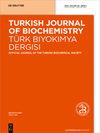巴基斯坦mianwali地区印度河地下水和地表水水质人为影响监测
IF 0.7
4区 生物学
Q4 BIOCHEMISTRY & MOLECULAR BIOLOGY
Turkish Journal of Biochemistry-turk Biyokimya Dergisi
Pub Date : 2013-01-01
DOI:10.5505/TJB.2013.66588
引用次数: 10
摘要
目的:监测巴基斯坦卡拉巴格地下和印度河地表水的水质,以调查该地区的人为活动,因为Mianwali地区的人们经常遭受牙齿和衣服上的锈斑。材料与方法:地下水样品采用全冲取样法。地表水样本采集自主要河流。采用标准方法测定电导率、总溶解固形物(TDS)、pH、化学需氧量(COD)和生化需氧量(BOD)。用等离子体原子发射分光光度法测定重金属。结果:所得结果与国家环境质量标准(NEQs)和世界卫生组织(WHO)规定的限量值进行了比较。在河流水样中,BOD、COD、TDS、电导率、pH和重金属的平均水平超过了NEQs和WHO的限制。Kamer村地下水样品中COD、BOD、TDS及镉、铬等重金属含量均低于最大污染限值(MCL)。但pH、电导率、铁和锰含量均超过MCL限值。绵瓦里市地下水样品的BOD、COD、TDS及镉、铬等重金属指标均低于MCL,而电导率、pH、重金属含量均高于MCL。结论:河流水体溶解氧(DO)、BOD、COD、TDS、铁、锰、铅、镉等指标均在MCL以上。在卡默村地下饮用水和绵瓦里城区河水样本中,铅、铁、锰的浓度也高于MCL。这可能是居民的牙齿和衣服上出现锈斑的原因之一。统计线性相关研究表明,金属可能来源于人为活动和自然影响。本文章由计算机程序翻译,如有差异,请以英文原文为准。
Monitoring of anthropogenic influences on underground and surface water quality of Indus River at district Mianwali-Pakistan
Aim: Quality of underground and Indus river surface water at Kalabagh, Pakistan was monitored to investigate the anthropogenic activities in the region because people of the Mianwali district often suffer from rusty spot on their teeth and clothes. Material and Methods: Fully flush sampling method was used for underground water samples. Surface water samples were collected from the main river flow. Conductivity, total dissolved solid (TDS), pH, chemical oxygen demand (COD) and biochemical oxygen demand (BOD) were measured using the standard procedures. Heavy metals were determined by plasma atomic emission spectrophotometry. Results: The obtained results were compared with the set limits of National Environmental Quality Standards (NEQs) and World Health Organization (WHO). In river water samples, the average levels for BOD, COD, TDS, conductivity, pH and heavy metals were exceeding the limits of NEQs and WHO. In underground water samples of Kamer village, levels for COD, BOD, TDS and heavy metals such as cadmium and chromium were below their maximum contamination limits (MCL). However, the levels for pH, conductivity, iron and manganese were above the limits of MCL. In underground water samples from Mianwali city, the parameters including BOD, COD, TDS and heavy metals, including cadmium and chromium were below their MCL, while the conductivity, pH, and heavy metals were also observed higher than their MCL. Conclusion: The investigated parameters for river water like dissolved oxygen (DO), BOD, COD, TDS, iron, manganese, lead, cadmium were reported above MCL. In underground drinking water of Kamer village and river water samples of Mianwali city areas, the concentration levels for lead, iron and manganese were also found higher than their MCL. This may be one of cause for rusty spot on teeth and clothes of the residents. The statistical linear correlation study indicates that metals might have their origin from anthropogenic activities and natural influences.
求助全文
通过发布文献求助,成功后即可免费获取论文全文。
去求助
来源期刊
CiteScore
1.20
自引率
0.00%
发文量
0
审稿时长
6-12 weeks
期刊介绍:
Turkish Journal of Biochemistry (TJB), official journal of Turkish Biochemical Society, is issued electronically every 2 months. The main aim of the journal is to support the research and publishing culture by ensuring that every published manuscript has an added value and thus providing international acceptance of the “readability” of the manuscripts published in the journal.

 求助内容:
求助内容: 应助结果提醒方式:
应助结果提醒方式:


